Your Cart is Empty
The Asian hornet (Vespa velutina) is an invasive predatory pest of European honeybees. Asian hornets are extremely threatening to EHB colonies. A single hornet can kill as many as 40 bees per minute with its large mandibles.
European honeybees did not evolve alongside Asian hornets, and unlike the Asian honeybee (Apis cerana), they have no natural defence against these predators.
The Asian hornet is native to Asia and occurs from Afghanistan across India, Pakistan and into eastern China, as well as in the Indonesian archipelago. They were introduced to southern France in 2005 and have quickly spread, reaching several European countries. They have also become established in South Korea.
The Asian giant hornet (Vespa mandarina) is a related species that was found in North America in 2019. The sightings were concentrated around Vancouver and Washington State. There have been no confirmed sightings since 2022.
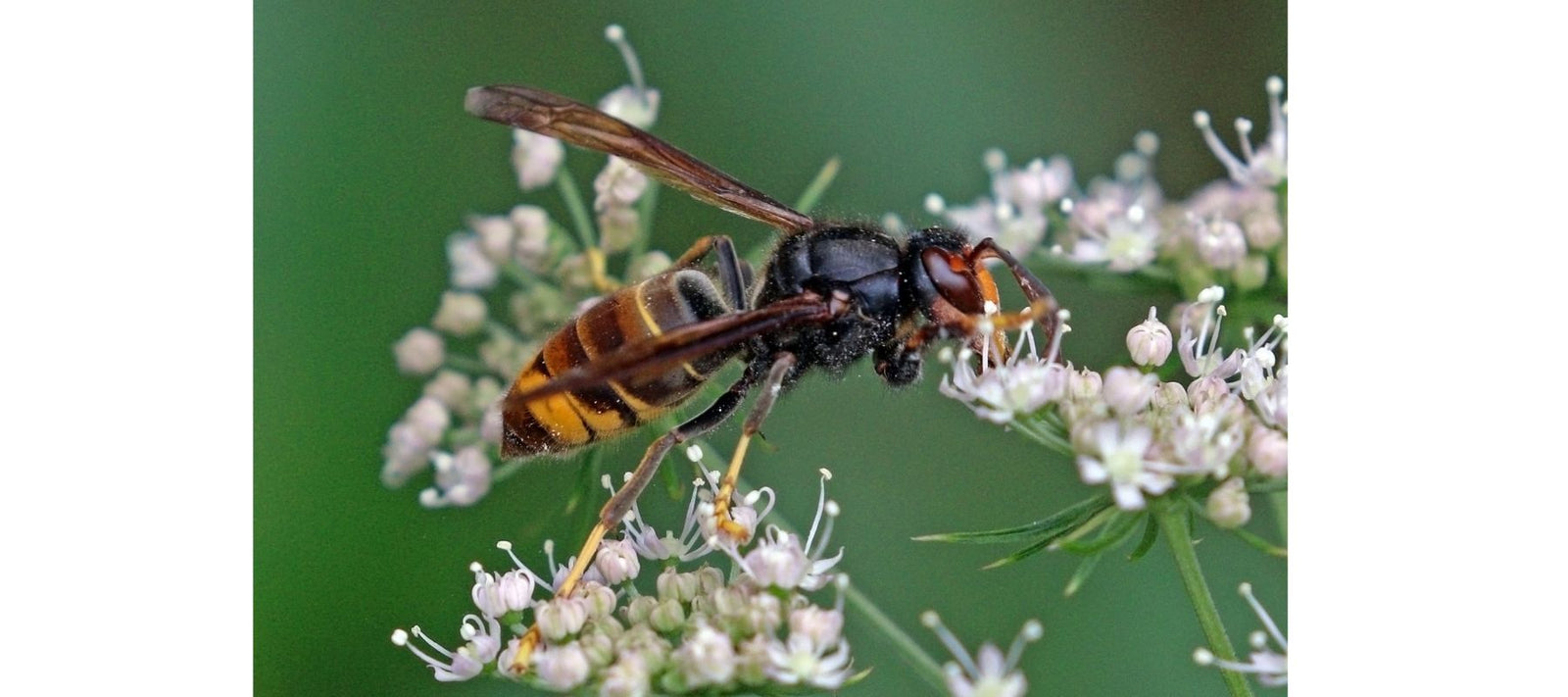
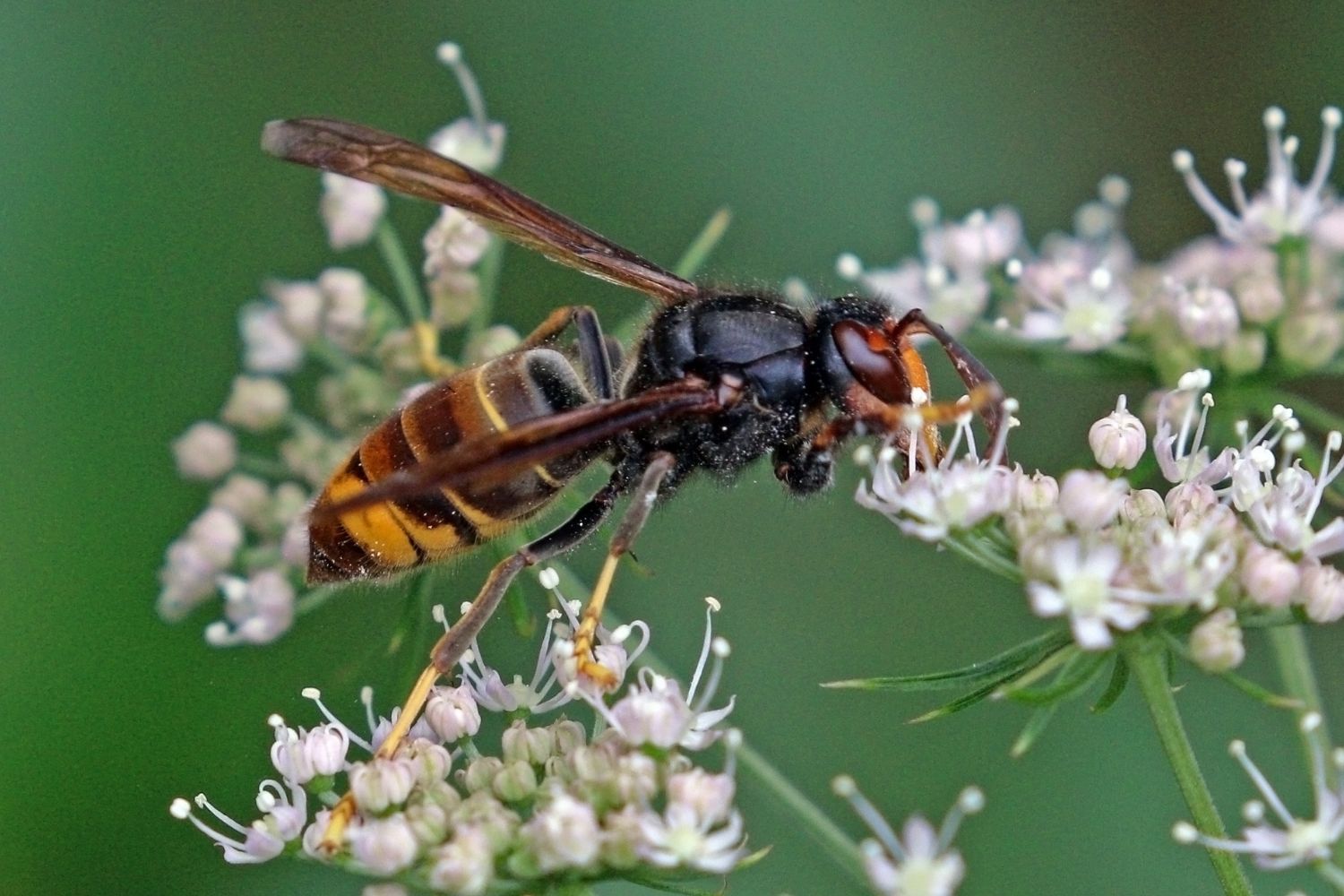
Asian hornet worker
Queen Asian hornets are approximately 3.5 cm long and workers are 2.5cm. Their bodies are black/dark brown with each abdominal segment bordered with a fine yellow band. Only the fourth abdominal segment is entirely yellow-orange in colour. They have a black head with a yellow/orange face. Their legs are brown with yellow tips.
Their nests are spherical, measuring between 60–90cm in height and 40–70cm in diameter. They have 5-6 outer layers of a brown/beige papier-mache-like material. They are usually found high in the branches of trees or in man-made structures. In France and their subsequent spread through Europe, they have been observed to prefer oaks, poplars and acacia trees but avoid conifers.
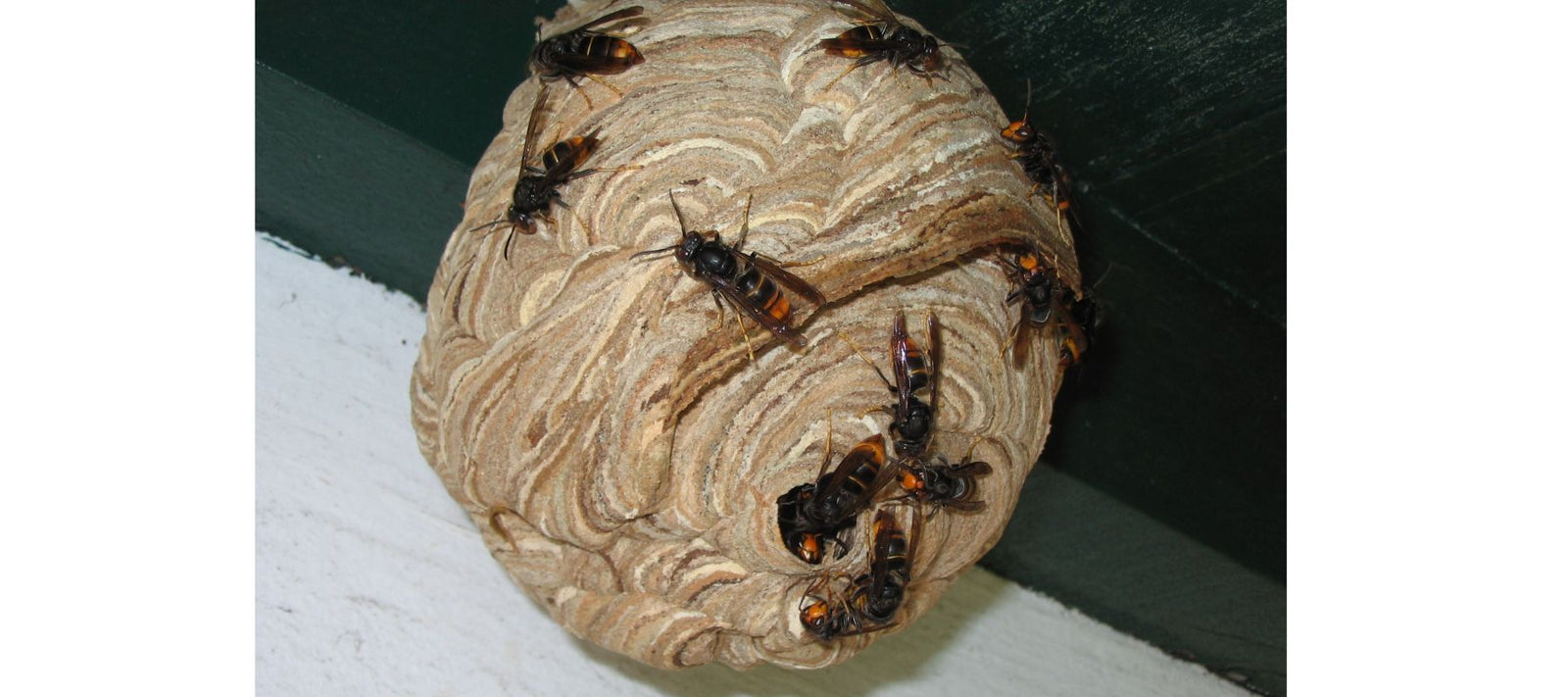

Asian hornet nest
Asian hornets attack beehives and can do so in large numbers. They hover in front of the hives and pick off single honeybees which they decapitate and strip off their wings and legs. They then take the thorax, which is full of protein, and chew the flesh into a sticky liquid they use to feed their offspring. Asian hornets also attack European honeybees to obtain the larvae as food for their own larvae. A few Asian hornets are enough to kill tens of thousands of EHB.
As well as the bees that are lost to asian hornets through predation, the hive is also weakened as the bees need to spend time and energy defending the hive. This leads to reduced foraging, pollination and brood production. In France, there are reports of colonies being completely lost due to Asian hornet predation.
Asian hornets are usually active during the daytime and stop flying at dusk. Their peak activity period is from spring to autumn, which can vary depending on the local climate.
They can be spotted hovering around honeybee colonies, a behaviour known as "hawking." They often target foraging bees returning to the hive with pollen or nectar and may also go after guard bees trying to protect the hive from these attacks.
Their nests can usually be found high in trees close to bee hives. Nests are often concealed from view until the autumn when the nests reach their largest size and some trees shed their leaves. They can also be discovered in garages, sheds, beneath decks, within holes, and occasionally within walls or underground. In the winter, any small well-insulated areas (natural or man-made) can be inspected for the presence of hibernating fertile queens.
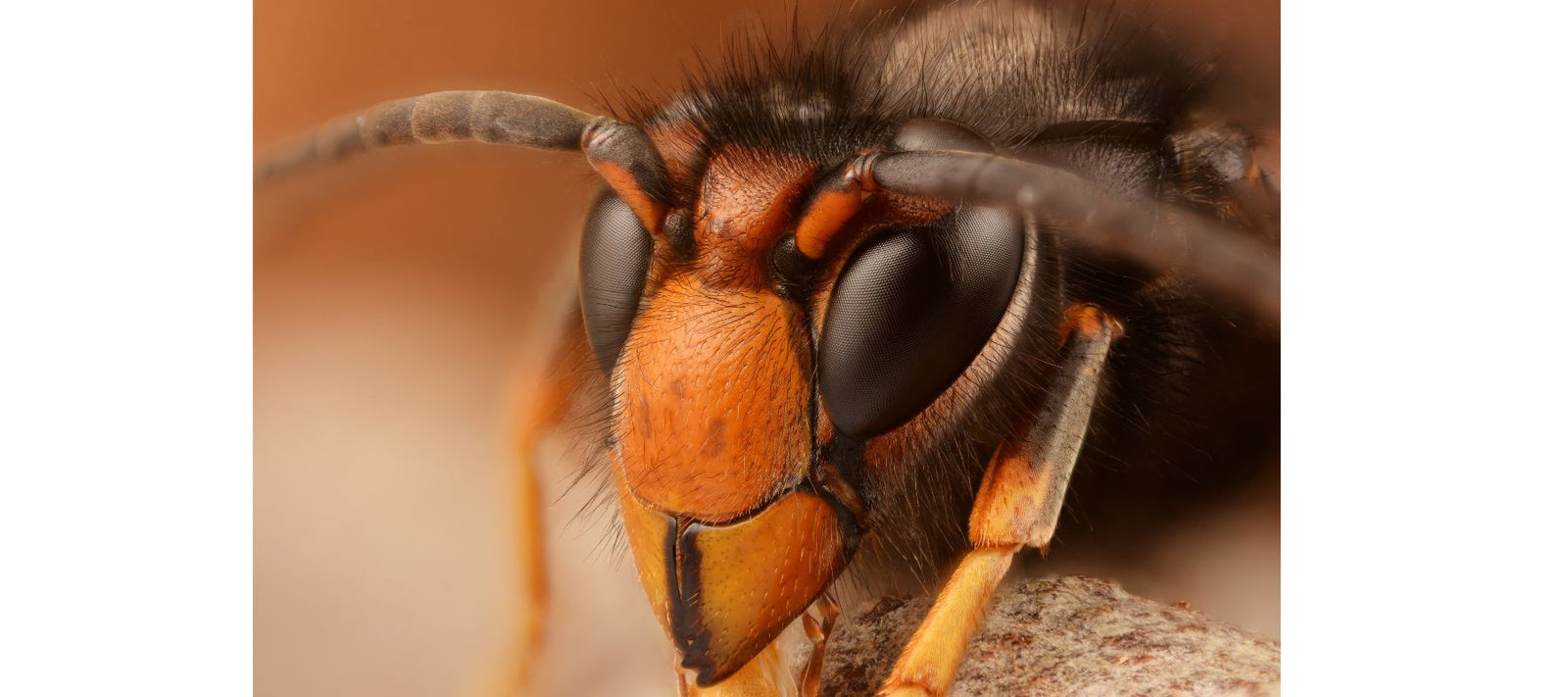
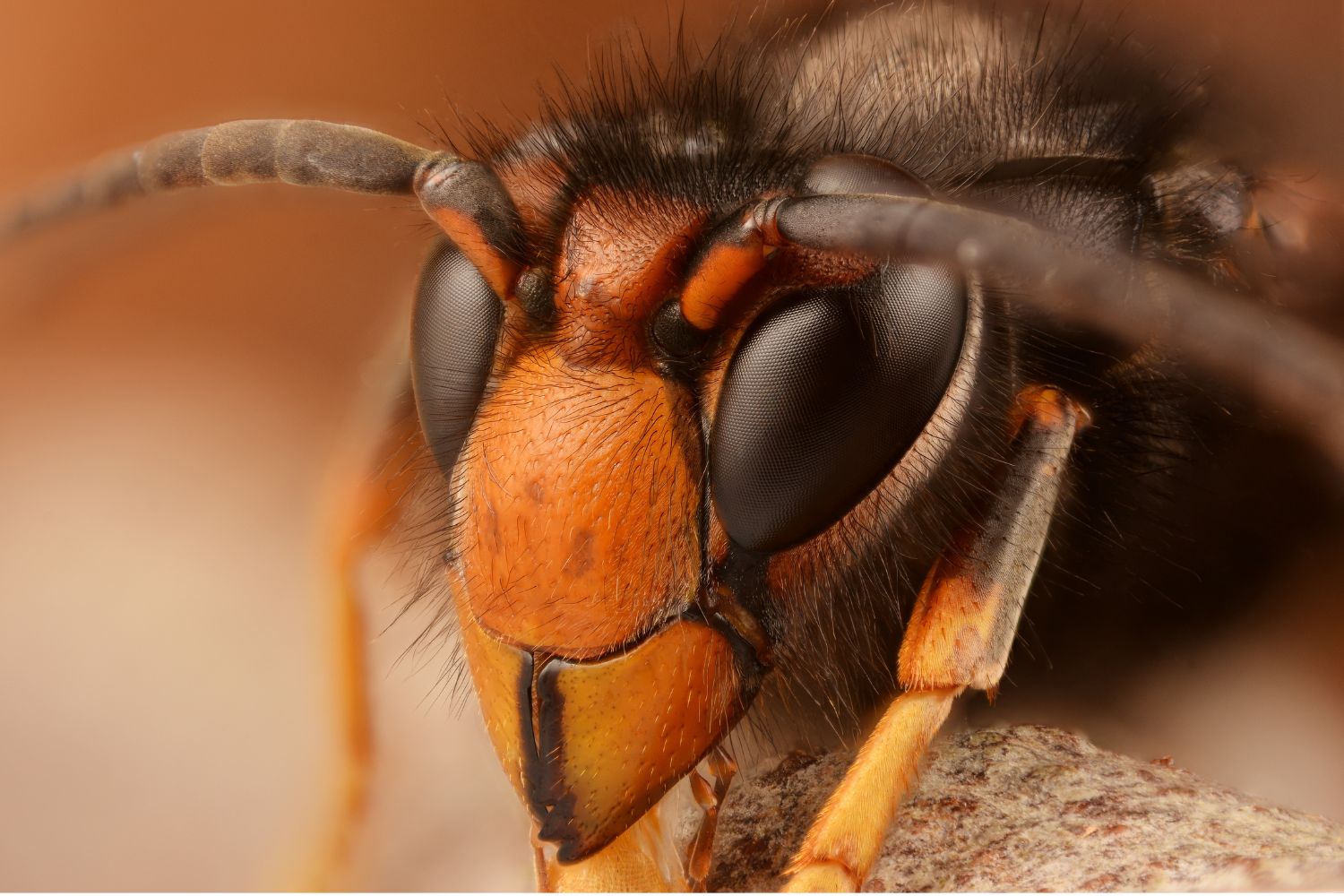
Asian hornet close up
If there are Asian hornets in your area, search for nests in the vicinity of your hives. Any nests you find should be destroyed. Hire a professional pest control company if necessary.
If you live in an area where Asian hornets are not yet established, but you suspect that you may have found them, report the sighting to the relevant authorities.
Traps can be used to prevent hornets from entering hives. These include sticky traps and decoy funnel entrances for Asian hornets and other flying beehive pests. When the hornets enter the hive by the decoy entrances, they become trapped in a false bottom where they dehydrate and ultimately die.
Another option is capturing the Asian hornets at the apiary and feeding them a sugar solution containing poison. Since Asian hornets practise trophallaxis (the transfer of food and bodily fluids from one individual to the other), the poison will be spread, ultimately leading to the death of multiple hornets.
If you choose to use poison, please do so responsibly in a way that minimises the chances of any inadvertent environmental harm and choose a compound that doesn't persist in the food chain.
Sources:
- beeaware.org.au/archive-pest/asian-hornet
- talkingwithbees.com/beekeeping-how-to-guides/asian-hornet-vespa-velutina
- en.wikipedia.org/wiki/Asian_hornet
- nationalbeeunit.com/diseases-and-pests/asian-hornet
Picture Credits:
- Charles J. Sharp - CC BY-SA 4.0
- Francis Ithurburu - CC BY-SA 3.0
- Giles San Martin, CC BY-SA 2.0
Beekeeping requires specialist skills, carries inherent dangers, and is often subject to regulation. Instructional content we provide is intended as a general guide only and may not be applicable to your specific circumstances. If in doubt, seek assistance from your local authority, a professional beekeeping service or your nearest beekeeping association.














